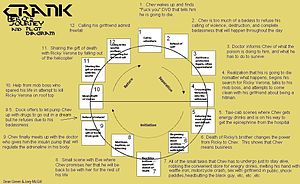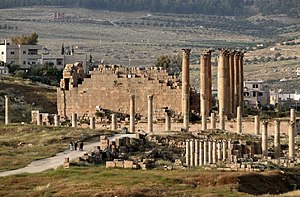 |
I was just thinking I had all my homework done for tomorrow when I reread the critical analysis project assignment and realized that the proposal is due tomorrow, too. Waah. Here goes:
My critical analysis paper will be on Guardians of the Galaxy, and I will be applying a myth criticism approach. I am interested in Peter Quill/Star Lord as a hero and how he measures up against the many hero archetypes. He's not exactly what might be expected as a hero: he's sarcastic, self-absorbed, and prone to bragging, and he is a criminal, on top of all that. The scene I have chosen to focus on is the prologue, which gives information about the birth stage of his hero's journey. My concerns about these choices center around material. At this point, I'm not sure that there will be enough.
It only needed to be 100 words, so I hope this will work.


















